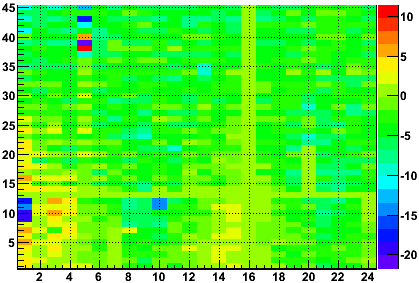- genevb's home page
- Posts
- 2025
- 2024
- 2023
- 2022
- September (1)
- 2021
- 2020
- 2019
- December (1)
- October (4)
- September (2)
- August (6)
- July (1)
- June (2)
- May (4)
- April (2)
- March (3)
- February (3)
- 2018
- 2017
- December (1)
- October (3)
- September (1)
- August (1)
- July (2)
- June (2)
- April (2)
- March (2)
- February (1)
- 2016
- November (2)
- September (1)
- August (2)
- July (1)
- June (2)
- May (2)
- April (1)
- March (5)
- February (2)
- January (1)
- 2015
- December (1)
- October (1)
- September (2)
- June (1)
- May (2)
- April (2)
- March (3)
- February (1)
- January (3)
- 2014
- December (2)
- October (2)
- September (2)
- August (3)
- July (2)
- June (2)
- May (2)
- April (9)
- March (2)
- February (2)
- January (1)
- 2013
- December (5)
- October (3)
- September (3)
- August (1)
- July (1)
- May (4)
- April (4)
- March (7)
- February (1)
- January (2)
- 2012
- December (2)
- November (6)
- October (2)
- September (3)
- August (7)
- July (2)
- June (1)
- May (3)
- April (1)
- March (2)
- February (1)
- 2011
- November (1)
- October (1)
- September (4)
- August (2)
- July (4)
- June (3)
- May (4)
- April (9)
- March (5)
- February (6)
- January (3)
- 2010
- December (3)
- November (6)
- October (3)
- September (1)
- August (5)
- July (1)
- June (4)
- May (1)
- April (2)
- March (2)
- February (4)
- January (2)
- 2009
- November (1)
- October (2)
- September (6)
- August (4)
- July (4)
- June (3)
- May (5)
- April (5)
- March (3)
- February (1)
- 2008
- 2005
- October (1)
- My blog
- Post new blog entry
- All blogs
T0s in Run 8
While studying residuals (generated from Sti, so-called "StiPulls") from Run 8 for work towards understanding h-/h+ issues, I decided to take a look at residuals in the time direction. Here I have plotted those residuals in units of nanoseconds vs. padrow and sector from day 044, when pp luminosities were still very low (ZDC coincidence rates below 1000 Hz).
TChain StiPulls("StiPulls");
StiPulls.Add("st_physics_90440*.tags.root");
TString sec = "((mHitsG.mHardwarePosition-(mHitsG.mHardwarePosition%16))/16)%32";
TString row = "((mHitsG.mHardwarePosition-(mHitsG.mHardwarePosition%512))/512)%64";
TString resZ = "(mHitsG.lZHit-mHitsG.lZFit)*sign(mHitsG.lZHit)";
TCut cut = "mHitsG.mPt>0.5&&mHitsG.mPt<10&&mHitsG.nTpcHits>=35&&abs(mHitsG.lZHit)<50";
gStyle->SetPalette(1);
gStyle->SetOptStat(0);
StiPulls.Draw(Form("%s/5.5e-3:%s:%s>>ts1(24,0.5,24.5,45,0.5,45.5)",resZ.Data(),row.Data(),sec.Data()),cut,"prof zcol");

Sector 16 was not operating for these runs, and other dead sections can be seen (such as all padrows 13, and sector 7 padrows 1-7 [RDO 1], and sector 20 padrows 14-21 [anode HV 5]). Also clear are some other regions of note:
- Sector 1, padrows 9-13 [RDO 2] are on the order of 20 ns offset! Neighboring padrows are shown at about +5 ns to compensate for this, resulting in -15 ns in the data for padrows 9-13.
- Sector 5 has some craziness at padrows 37-40. This is probably related to the not-yet-understood issues seen in ADC recordings and cluster-finding at the very same location (see the second half of Run8pp zerobias charge asymmetry on zerobias data).
- Sector 10 shows some peculiar offset of more than 10 ns for padrows 11 and 12. Perhaps this is a single FEE card.
These issues on scales of several ns (or several hundred microns, converting by a drift velocity of ~5.5e-3 cm/ns, and as much as 1 mm for RDO 1-2) are comparable to what's been seen in Run 9 data with the new electronics, but perhaps may not have been much of an issue for the physics attempted from Run 8. However, it seems to me that this would be a notable issue for Runs 5 and 7 where the silicon was to be aligned to sub-mm precision in the z direction. This should be followed up.
-Gene
- genevb's blog
- Login or register to post comments
